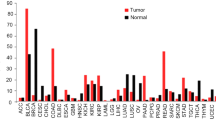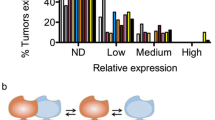Abstract
The peroxisome proliferator activated receptor (PPAR)-γ ligands have been initially described as important regulators of adipogenic differentiation and glucose homeostasis. Detailed studies in different tissues pointed to the roles of these ligands in cell proliferation and cancer, establishing their anticancer properties against a wide variety of neoplastic cells. The growth of any solid tumor depends on angiogenesis, as tumor vascularization is a vital process for tumor volume increase and its metastatic potential. Recently, the role of PPAR-γ ligands as potent angiogenesis modulators in vitro and in vivo, has been referred. This review takes into consideration the latest data concerning the participation of PPAR-γ ligands in the biological mechanisms underlying angiogenesis inhibition (important in anticancer therapy) and the controversy concerning angiogenesis induction (important in non-neoplastic diseases). As inhibition of angiogenesis represents one of the more promising, new approaches to anticancer therapy, PPAR-γ ligands in addition to their established role as tumor cell cycle modulators could be implicated in future strategies for cancer treatment.
Similar content being viewed by others
References
Folkman J. Angiogenesis in cancer, vascular, rheumatoid and other diseases. Nat Med 1995; 1: 27–31.
Kahn J, Mehraban F, Ingle G et al. Gene expression profiling in an in vitro model of angiogenesis. Am J Pathol 2000; 156: 1887–900.
Yamakawa K, Hosoi M, Koyama H et al. Peroxisome proliferator-activated receptor-γ agonists increase vascular endothelial growth factor expression in human vascular smooth muscle cells. Biochem Biophys Res Commun 2000; 271: 571–4.
Hayes AJ, Li LY, Lippman ME. Antivascular therapy: A new approach to cancer treatment. BMJ 1999; 318: 853–6.
Benjamin L, Golijanin D, Itin A et al. Selective ablation of immature blood vessels in established tumours follows vascular endothelial growth factor withdrawal. J Clin Invest 1999; 103: 159–65.
Gelman L, Fruchart J-C, Auwerx J. An update on the mechanisms of action of the peroxisome proliferator-activated receptors (PPARs) and their roles in inflammation and cancer. Cell Mol Life Sci 1999; 55: 932–43.
Debril M-B, Renaud J-P, Fajas L, Auwerx J. The pleiotropic functions of peroxisome proliferator-activated receptor γ. J Mol Med 2001; 79: 30–47.
Theocharis S, Margeli A, Kouraklis G. PPAR-gamma ligands as potent antineoplastic agents. Curr Med Chem Anticancer Agents 2003; 3: 239–51.
Asano A, Irie Y, Saito M. Isoform-specific regulation of vascular endothelial growth factor (VEGF) family mRNA expression in cultured mouse brown adipocytes. Mol Cell Endocrinol 2001; 174: 71–6.
Xin X, Yang S, Kowalski J, Gerritsen ME. Peroxisome proliferator-activated receptor γ ligands are potent inhibitors of angiogenesis in vitro and in vivo. J Biol Chem 1999; 274: 9116–21.
Bishop-Bailey D, Hla T. Endothelial cell apoptosis induced by the peroxisome proliferator-activated receptor (PPAR) ligand 15-deoxy-Δ12,14-prostaglandin J2. J Biol Chem 1999; 274: 17042–8.
Murata T, He S, Hangai M et al. Peroxisome proliferatoractivated receptor-gamma ligands inhibit choroidal neovascularization. Invest Ophthalmol Vis Sci 2000; 41: 2309–17.
Panigrahy D, Singer S, Shen LQ et al. PPARγ ligands inhibit primary tumor growth and metastasis by inhibiting angiogenesis. J Clin Invest 2002; 110: 923–32.
Berger J, Moller DE. Mechanism of action of PPARs. Annu Rev Med 2002; 53: 409–35.
Freed MI, Allen A, Jorkasky DK, DiCicco RA. Systemic exposure to rosiglitazone is unaltered by food. Eur J Clin Pharmacol 1999; 55: 53–6.
Sierra-Honigmann MR, Nath AK, Murakami C et al. Biological action of leptin as an angiogenic factor. Science 1998; 281: 1683–6.
Qian H, Hausman GJ, Compton MM et al. Leptin regulation of peroxisome proliferator-activated receptor-gamma, tumor necrosis factor, and uncoupling protein-2 expression in adipose tissues. Biochem Biophys Res Commun 1998; 246: 660–7.
Rieusset J, Auwerx J, Vidal H. Regulation of gene expression by activation of the peroxisome proliferator-activated receptor gamma with rosiglitazone (BRL 49653) in human adipocytes. Biochem Biophys Res Commun 1999; 265: 265–71.
Goetze S, Bungenstock A, Czupalla C et al. Leptin induces endothelial cell migration through Akt, which is inhibited by PPARgamma-ligands. Hypertension 2002; 40: 748–54.
Possati L, Rocchetti R, Talevi S et al. The role of peroxisome proliferator-activated receptor gamma in bladder cancer in relation to angiogenesis and progression. Gen Pharmacol 2000; 35: 269–75.
Guan YF, Zhang YH, Breyer RM et al. Expression of peroxisome proliferator-activated receptor gamma (PPARgamma) in human transitional bladder cancer and its role in inducing cell death. Neoplasia 1999; 1: 330–9.
Fauconnet S, Lascombe I, Chabannes E et al. Differential regulation of vascular endothelial growth factor expression by peroxisome proliferator-activated receptors in bladder cancer cells. J Biol Chem 2002; 277: 23534–43.
Jozkowicz A, Dulak J, Piatkowska E et al. Ligands of peroxisome proliferator-activated receptor-gamma increase the generation of vascular endothelial growth factor in vascular smooth muscle cells and in macrophages. Acta Biochim Pol 2000; 47: 1147–57.
Browder T, Butterfield CE, Kraling BM et al. Antiangiogenic scheduling of chemotherapy improves efficacy against experimental drug-resistant cancer. Cancer Res 2000; 60: 1878–86.
Klement G, Baruchel S, Rak J et al. Continuous low-dose therapy with vinblastine and VEGF receptor-2 antibody induces sustained tumor regression without overt toxicity. J Clin Invest 2000; 105: R15–24.
Author information
Authors and Affiliations
Corresponding author
Rights and permissions
About this article
Cite this article
Margeli, A., Kouraklis, G. & Theocharis, S. Peroxisome Proliferator Activated Receptor-γ (PPAR-γ) Ligands and Angiogenesis. Angiogenesis 6, 165–169 (2003). https://doi.org/10.1023/B:AGEN.0000021377.13669.c0
Issue Date:
DOI: https://doi.org/10.1023/B:AGEN.0000021377.13669.c0




